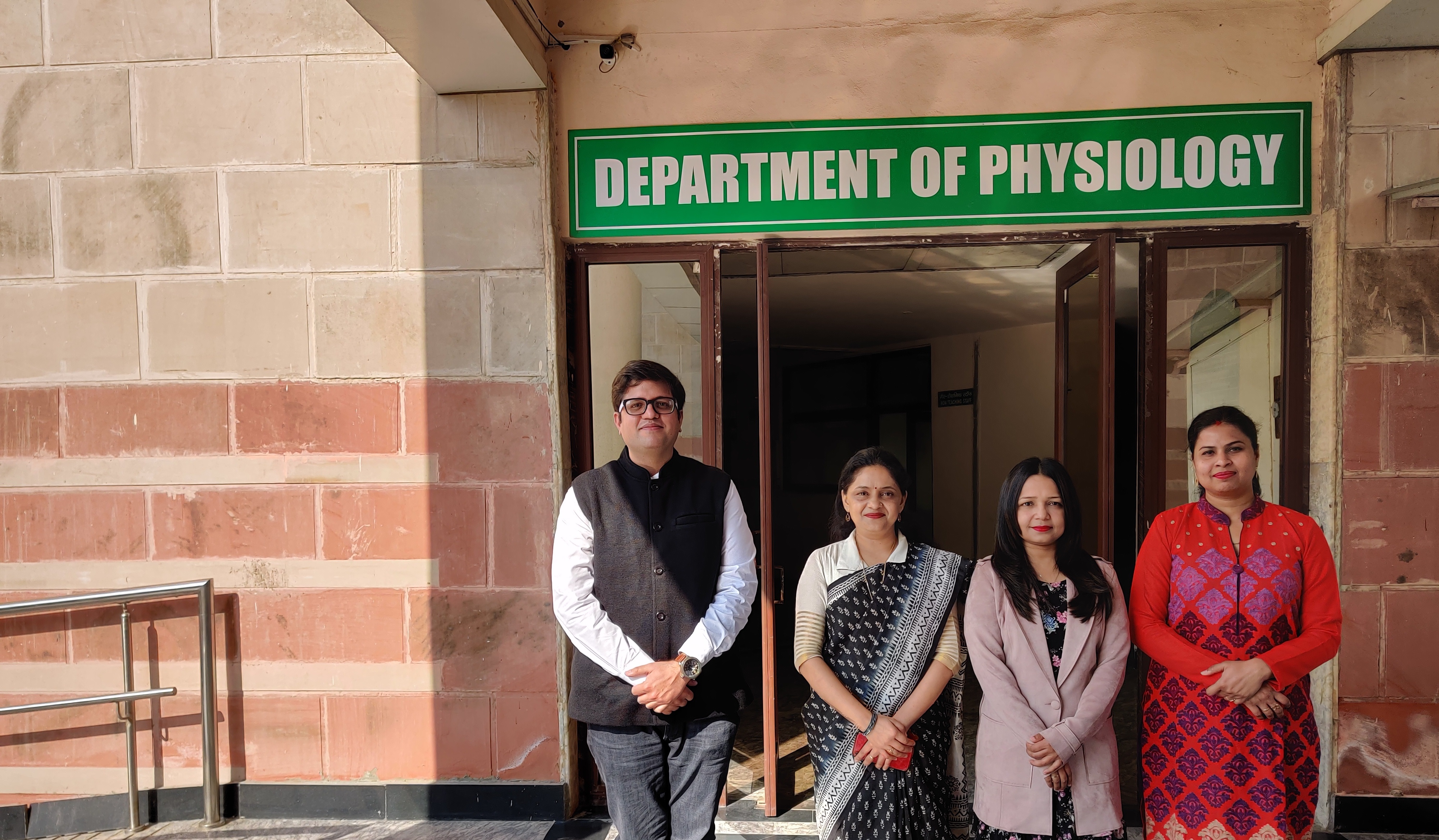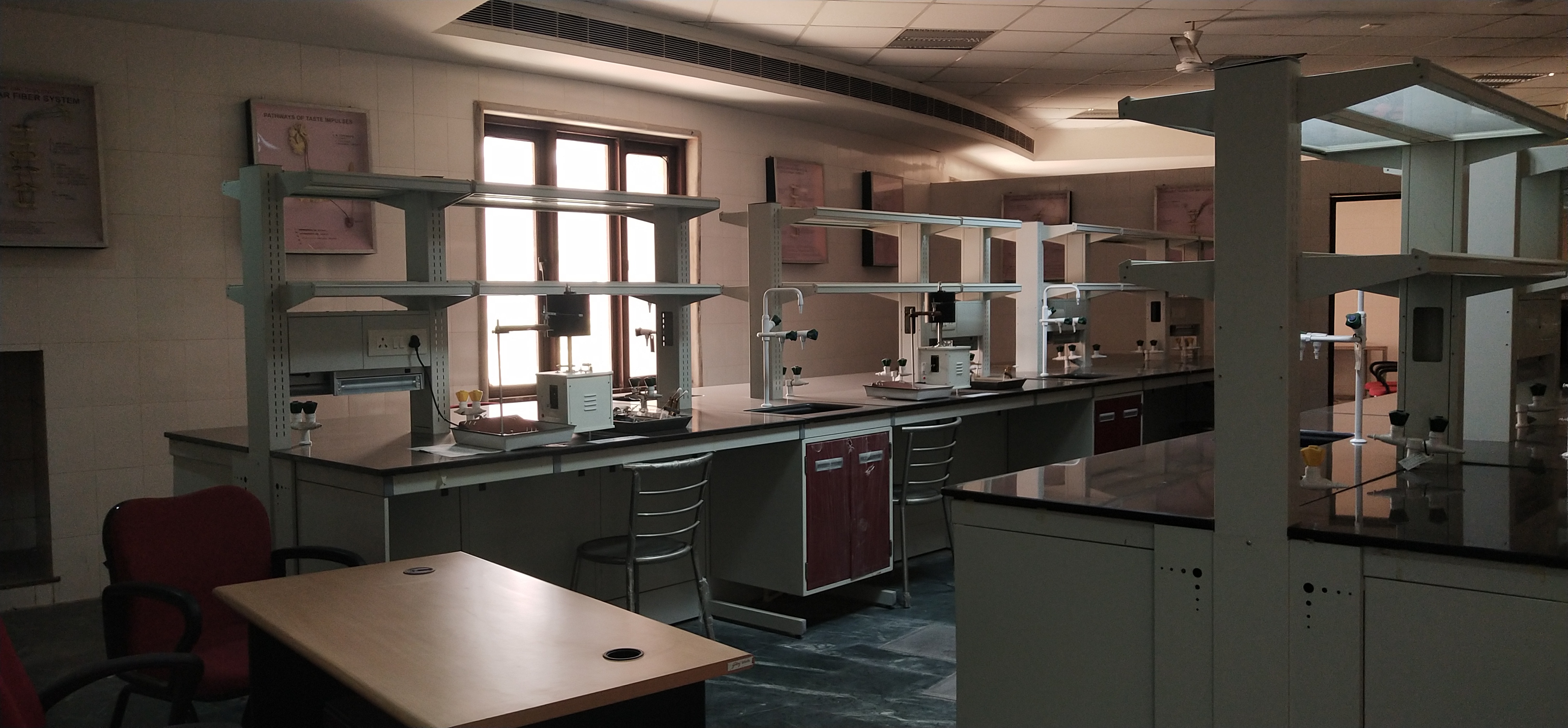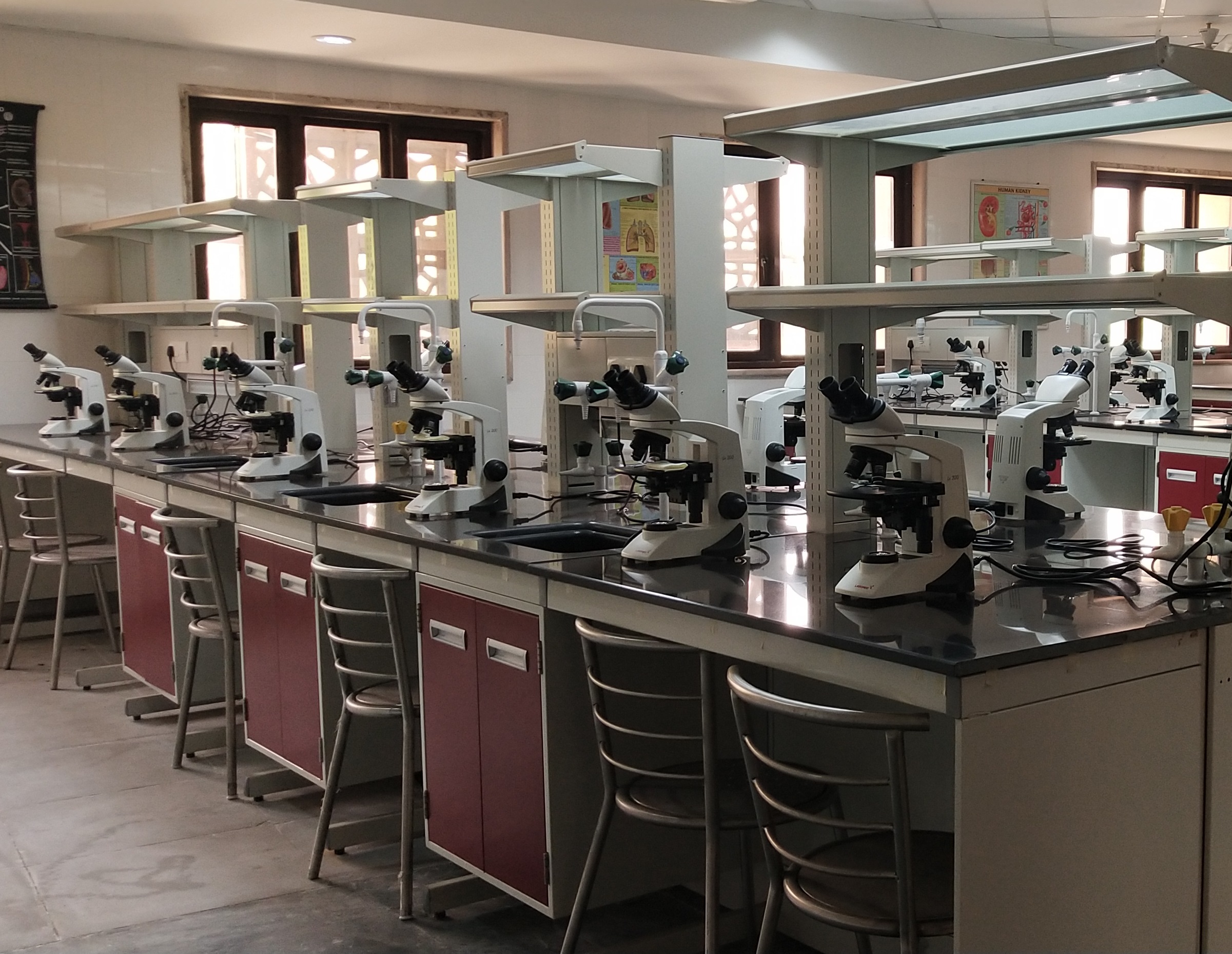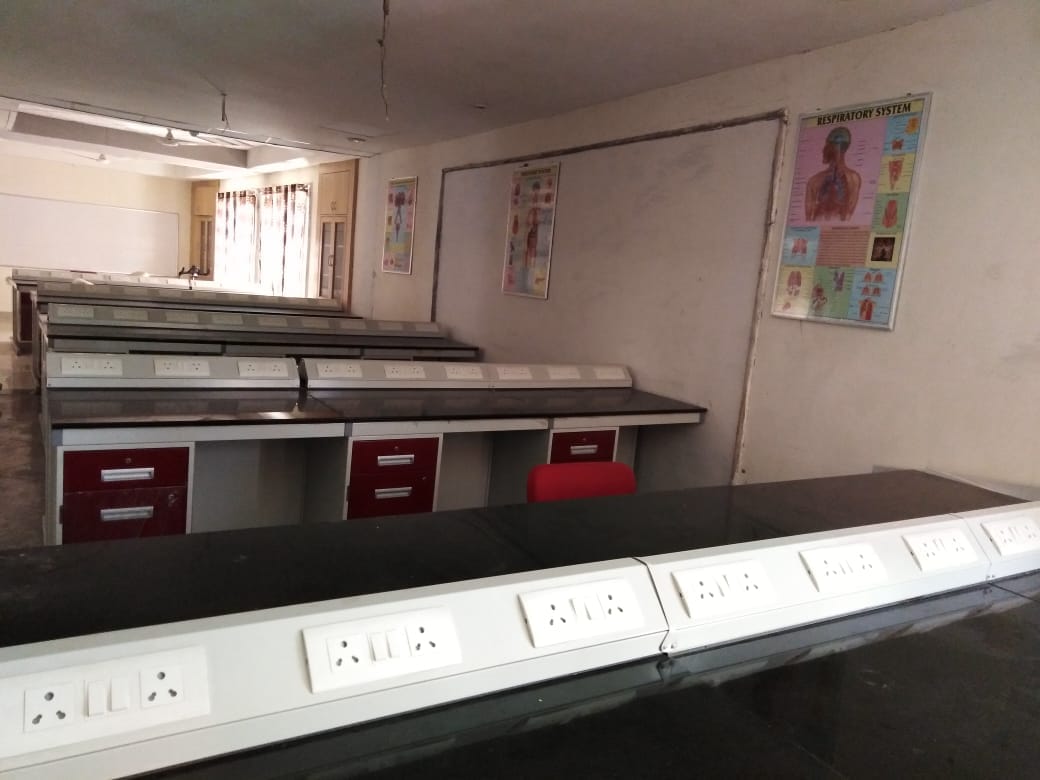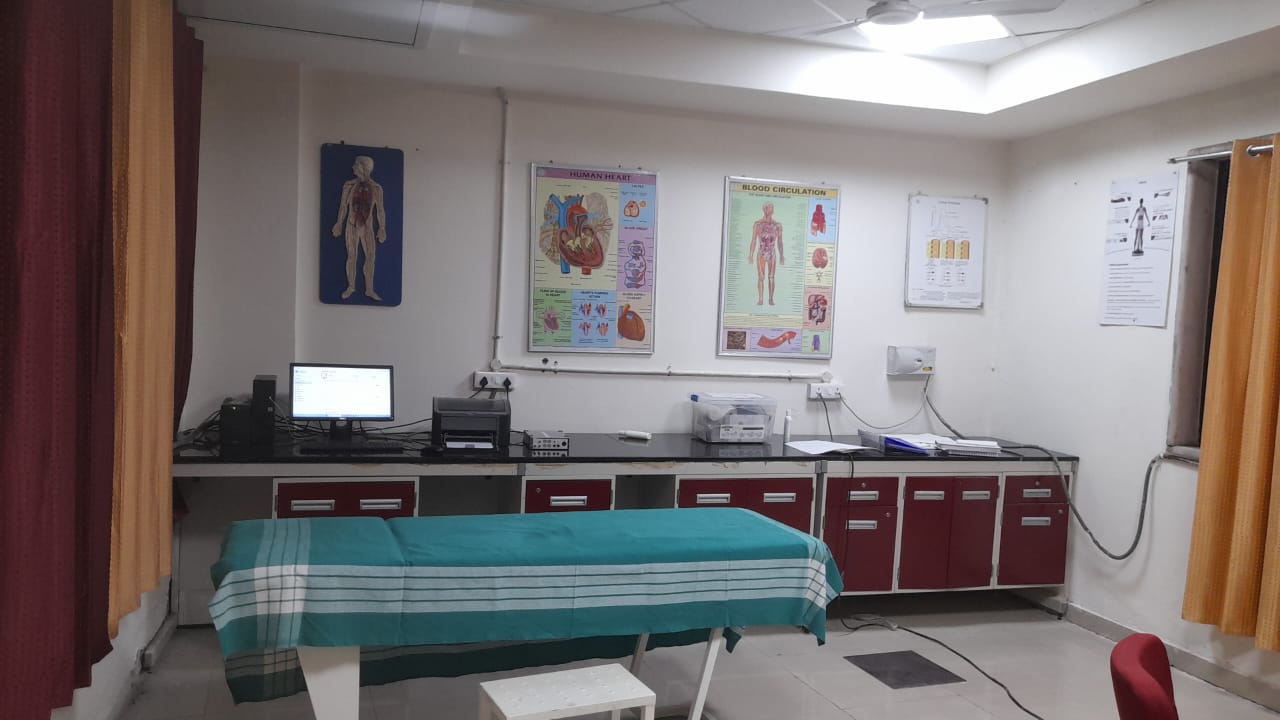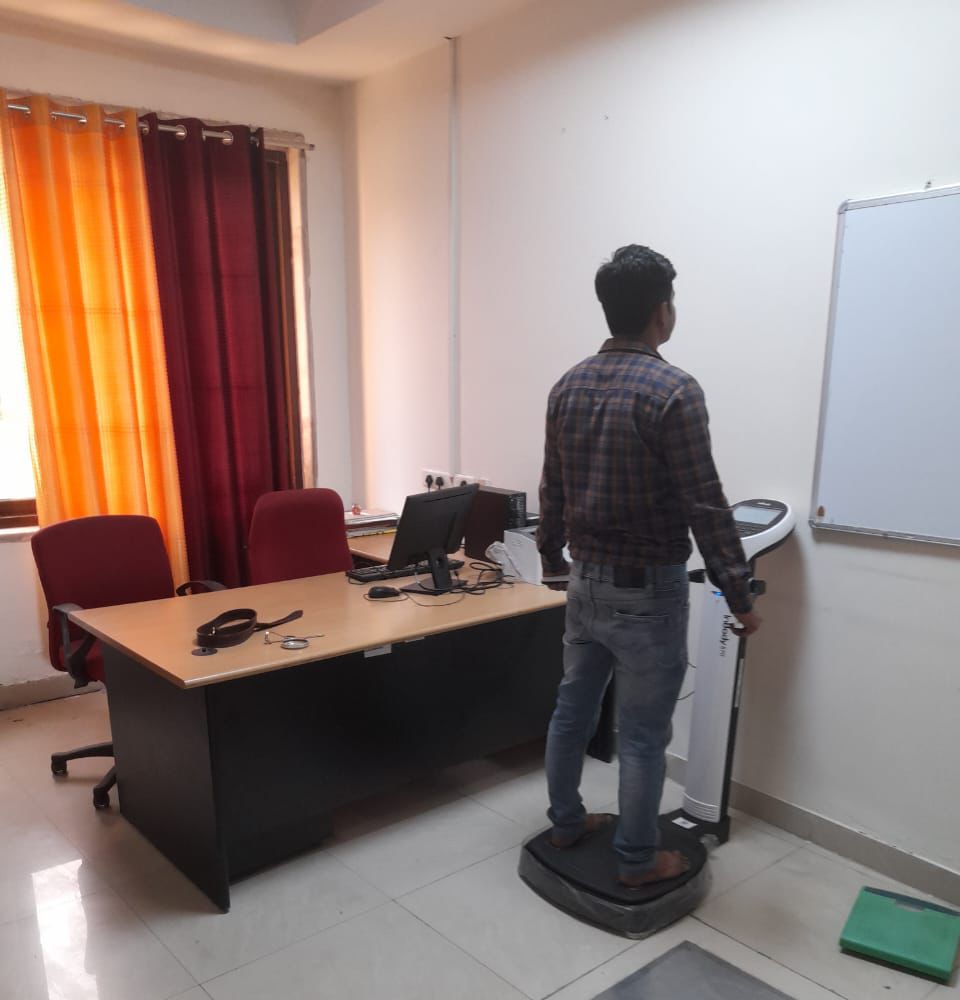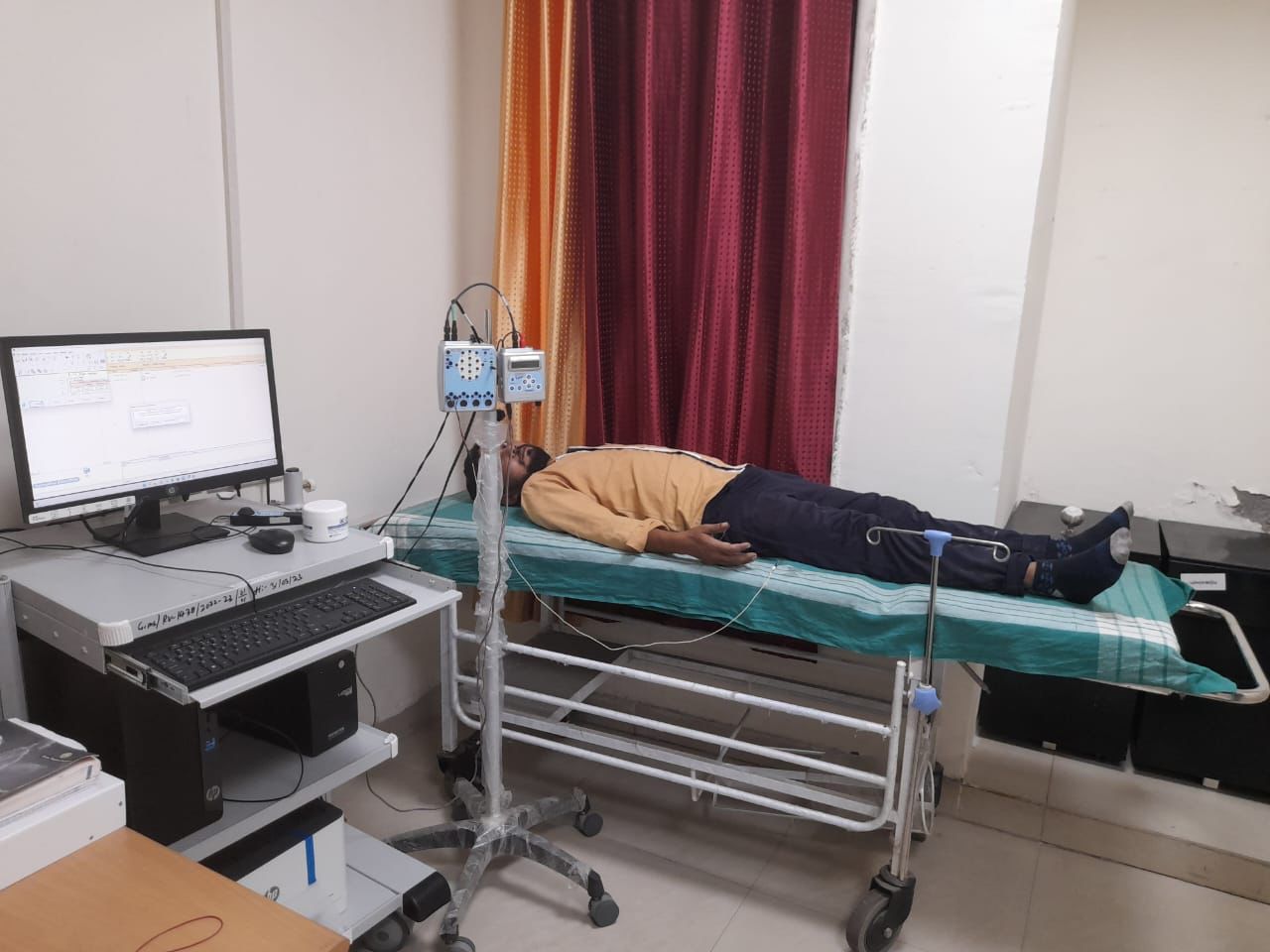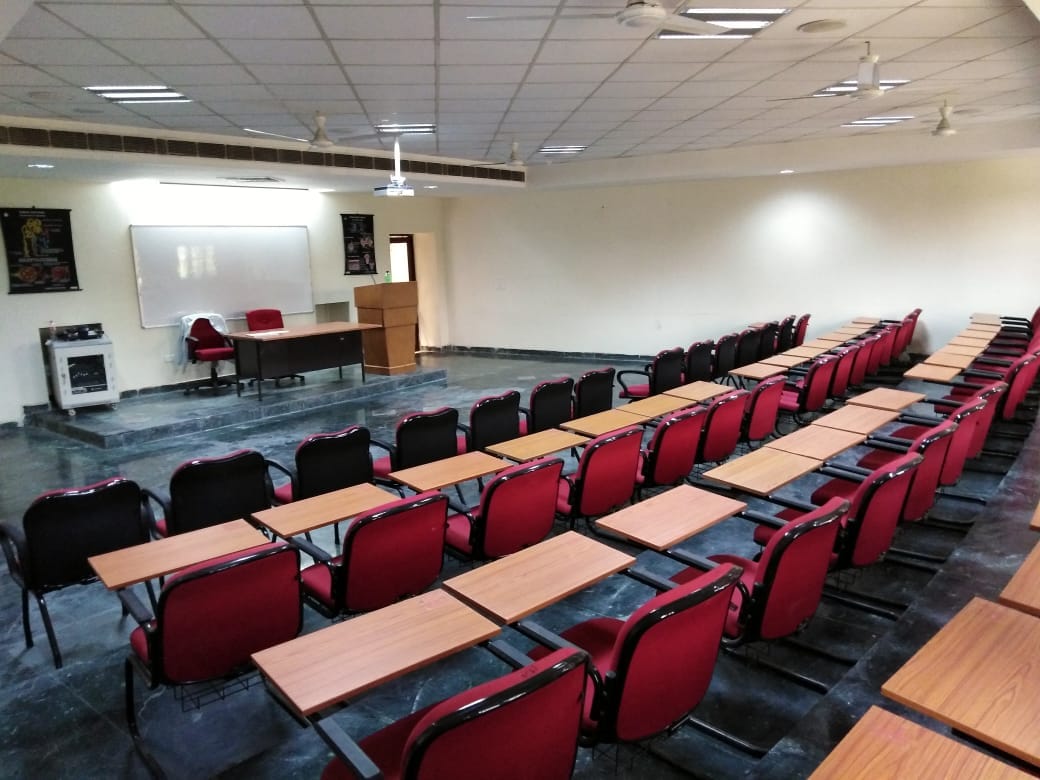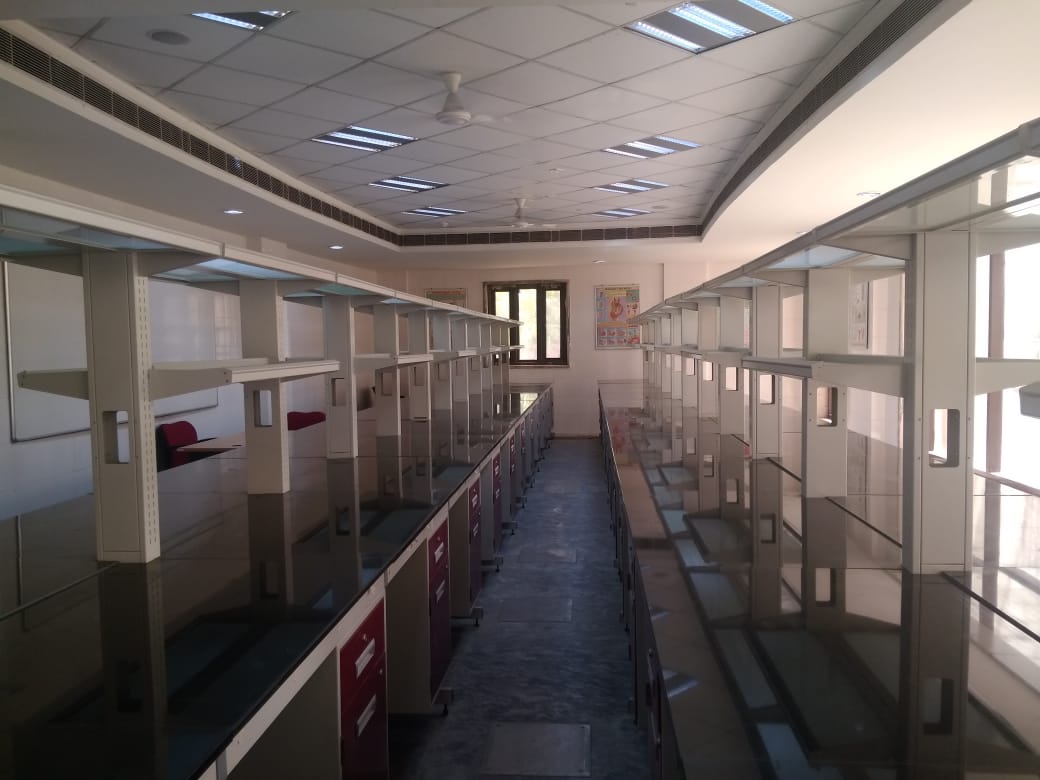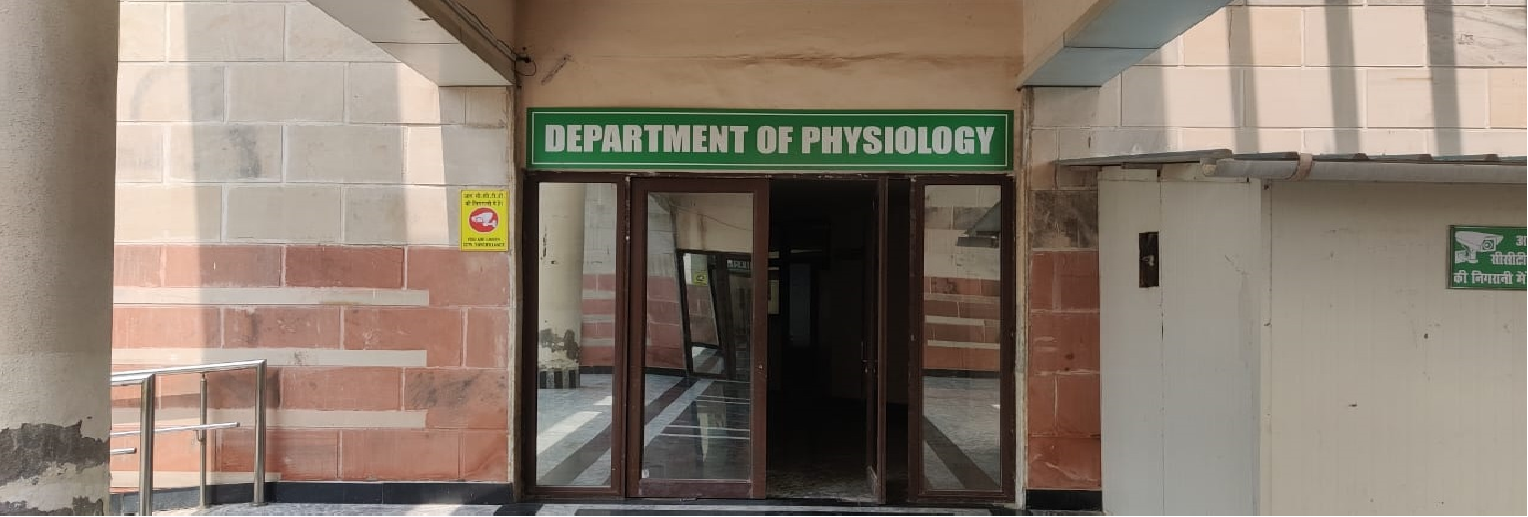
Physiology is the study of the biological processes that support life. Physiology studies the interaction between factors that determine health and disease at the cellular, tissue, and whole-organism levels. The department of Physiology is located in the ground floor of Academic Block of Government Institute of Medical Sciences, Greater Noida. The department is actively involved in teaching and research. Currently involved in teaching undergraduate medical, nursing and paramedical students. The department has numerous research projects and publications to its credit. Many books have been authored by the faculty. The facilities provided by the department include Autonomic Function lab, life style research lab, spirometry, exercise physiology, neurophysiology Lab.
Faculty and tutors in the Department of Physiology:
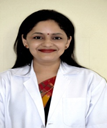
MD (Physiology), MAMS, FAIMER
Professor & Head
Email:-drbhartib.rathore@gmail.com
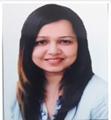
Associate Professor
MD(Physiology)
Email:-aprajitapanwar1983@gmail.com

MD (Physiology)
Assistant Professor
Email:- dr.prernaagarwal@gmail.com
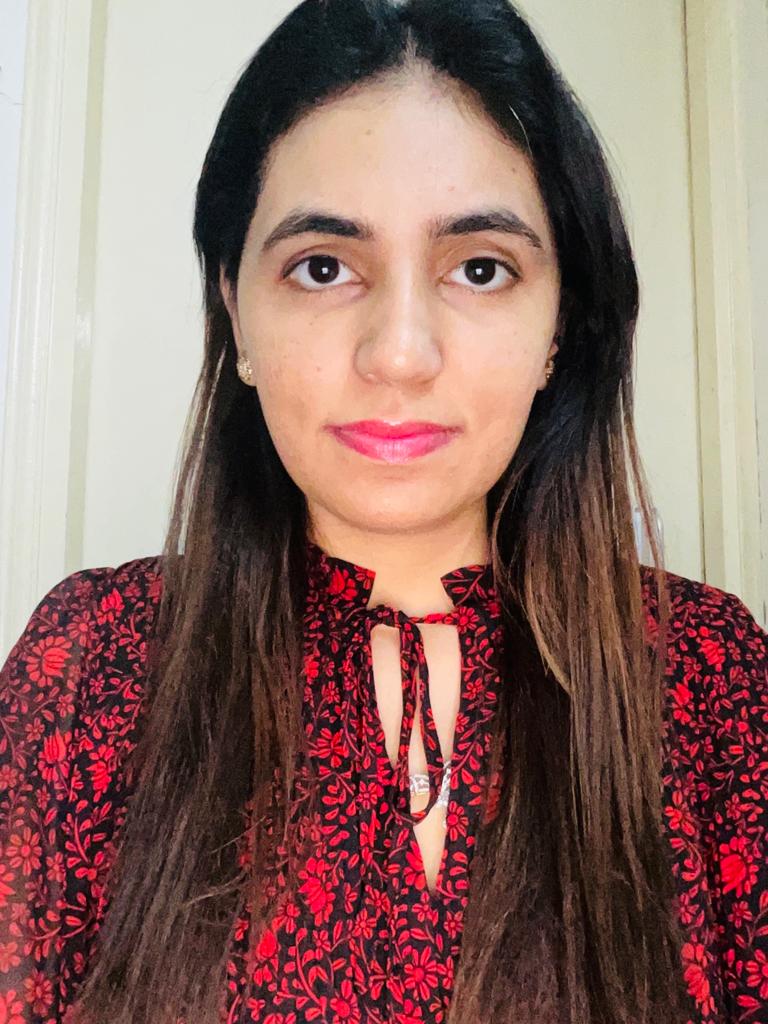
MD (Physiology)
Senior Resident
Email:-drpreetikaliramana@gmail.com
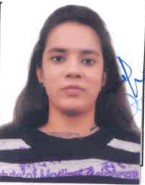
MBBS (Physiology)
Email:-Hs9161196@gmail.com

MSc (Physiology)
Email:- rishabhsoni624@gmail.com

(MSc, Medical Physiology)
Tutor
Email:-radhikaagarwal.9172@gmail.com
Non-Teaching Staff in the Department of Physiology
Departmental Information:
Teaching
Implementation of CBME curriculum in organized manner with changes incorporated as per revised NMC guidelines..Further improvisation of implemented curriculum with modules for ECE, AETCOM, SDL and Electives.
Permission for Post graduation in Physiology.
Department of Physiology envisions itself as a center of excellence in the provision of integrated teaching, research and clinical services to MBBS & DNB students.
Research
To carry out multiple collaborative non-funded research projects.To conduct National conference and Workshops related to Physiology techniques.
To carry out multiple collaborative funded/non-funded research projects.
To contribute significant new knowledge to the society through need-based quality research works.
Faculty Development
To publish at least two papers per Faculty and Tutors per year.Completion of Revised Basic Course workshop and Basic Course in Biomedical research by all faculty.
Short term training and certification courses by faculty members.
1. Autonomic function testing lab
2. Life-style modification lab
3. Neurophysiology lab
4. Spirometry Laboratory
Postgraduate Training – DNB teaching & Research
Nursing & paramedical Training

Department Training :
- Teaching & Research
1. Letter of permission from Medical Council of India vide letter No. MCI-34(41) (E-60)/2019 Med/ 115574 dated 20th May 2019 for starting MBBS course for 100 students. Five batches of 100 students have been admitted till date.
2. Academic activities include 525 hours of teaching in the form of Didactic lectures, tutorials, small group discussions, self-directed learning, Early clinical exposure, AETCOM sessions, seminars and practical demonstration sessions, Elective training, STS projects.
MBBS
DNB
Induction & Research programmeB. Sc. Nursing & Paramedical
Undergraduate teachingDetails of research projects by the department of Physiology:

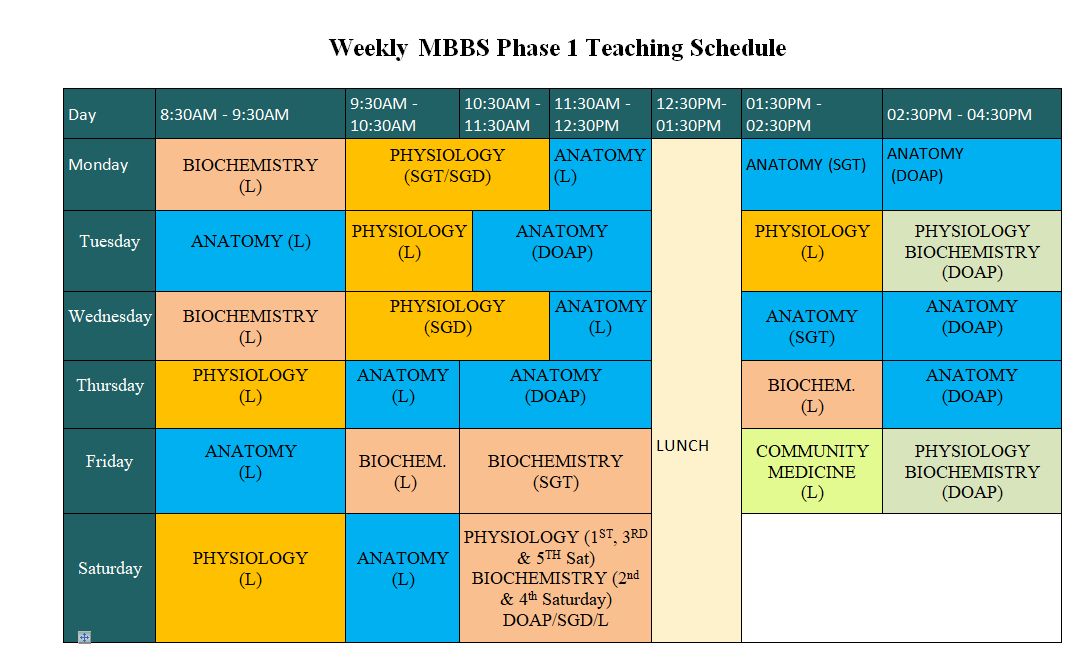

Conferences/Workshops/ CME Organized by the Department:
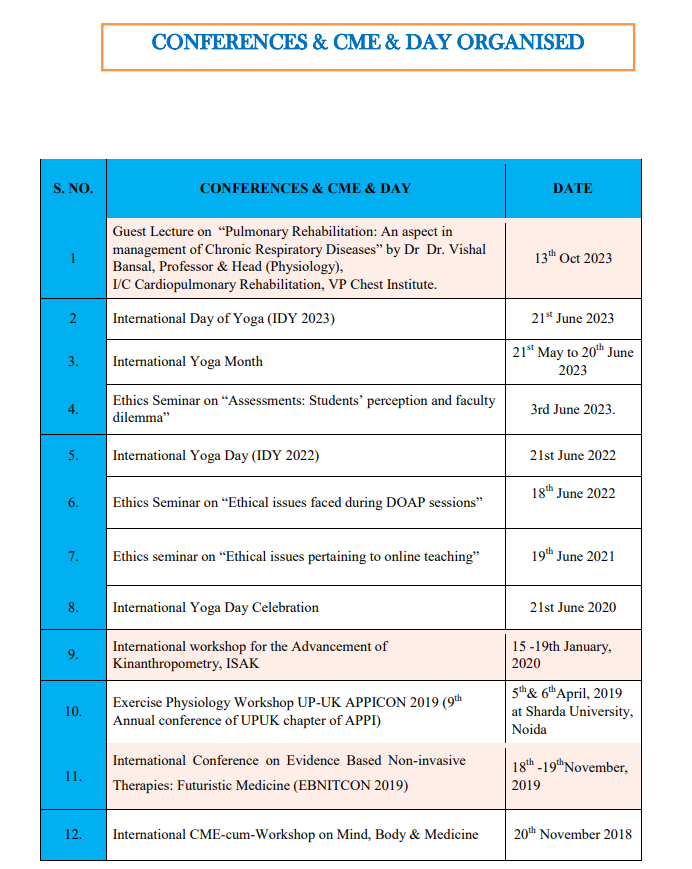
Departmental achievements:
- 1. Successful implementation of CBME curriculum to two Batch of MBBS students (Batch 2019-2020).
- 2. Preparation of module for self-directed learning.
- 3. Improvement in infrastructure in the form of well-equipped research laboratory.
- 4. Preparation of UG Practical manual in Physiology as per CBME curriculum.
- 5. Successful conduction of online lectures, ECE, SDL and assessments during COVID-19 pandemic.
Work-load:
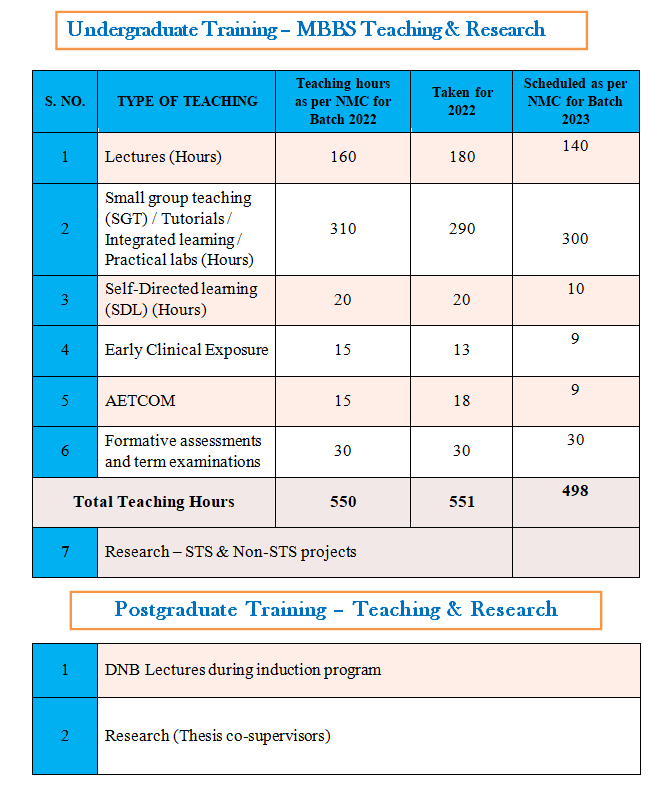
Vision plan of department of Physiology:
PG Teaching
Permission for Post graduation in Physiology.
To conduct National conference and Workshops related to Physiology techniques.
To conduct National conference and Workshops related to Physiology techniques.
Road map for next 10 years:
- Develop the department as a centre of excellence in Physiology for undergraduate & postgraduate training.
- Developand validate PG teaching module.
- Facilitate the training of faculty in their field of interest.
- Fellowship in Medical Education and other research fields.
- Improvise the research in the department with extra-mural projects.
- Organize National and International conferences.
- Establish following Research Laboratories:
- Life-style modification lab: This will provide Yoga therapy/ Meditation sessions, diet counselling and carrying out research with Clinical Departments.
- Autonomic function testing (AFT) lab: For research purposes and to evaluate the Sympathovagal imbalance (SVI) in patients.
- Neurophysiology lab: In this lab, we can do studies with parameters of EEG, EMG, Nerve conduction studies, Audio-Visual Evoked Potentials.
- Anthropometry Lab
- Pulmonary function Laboratory
Details of Faculty development/ achievements
Dr. Bharti Bhandari Rathore:
- 1. Conferred FAIMER fellowship.
- 2. Organizing Secretary of the Symposium cum Panel Discussion on “Electives” organized by ASSOPI UP Chapter, Physiology Insight
- 3. Authored “Self-directed Learning in Physiology”.
- 4. Awarded “MECOR Research Award” by American Thoracic Society.
- 5. Resourse Faculty in series of Physiology Education Workshops conducted all over India, under the aegis of IUPS & ICMR
- 6. Research Advisor at Nan Yang Academy of Sciences (Singapore)
- 7. Granted Scholarship by LMU, Munich to attend The Academic Teachers’ Training Course (ATTC) at Centre for International Health, Munich, Germany.
- 8. Conferred with membership of National Academy of Medical Sciences.
- 9. Granted scholarship by American Thoracic Society to attend MECOR-1 at Jaipur.
- 10. Best oral paper presentation award at ASSOPICON 2014 at JIPMER, Pondicherry.
- 11.Authored a textbook “Salubris Prep Manual in Physiology (based on CBME Curriculum)” by Salubris Publications, New Delhi.
- 12. Co-Authored a book “ MCQs in Medical Physiology” by Red Flower Publications, New Delhi.
- 13. Member –Association of Physiologists & Pharmacologists of India, Association of Physiologists of India, National Academy of Medical Sciences, American Thoracic Society, Indian Society for Lead Awareness & Research, Indian Society of Oncology, National Medicos Organization , Indian Public Health Association, Indian Society for Sleep Research, Academy of Health Professions Educators.
Dr. Aprajita Panwar:
2. Scientific Committee Chairperson for International Conference on "Evidence Based Non-Invasive Technologies: Futuristic Medicine" on 18th & 19th Nov 2019 at GBU auditorium, Gr Noida
3. Reviewer - Journal of Asian Medical Student Association
4. Reviewer of MAMC Journal of Health Sciences
5. Co-PI in ICMR extramural project “Clinical spectrum, pathophysiology and immunological profile of SARS-n CoV2 induced multisystem inflammatory syndrome among pediatric age group: A multi-centric prospective cohort study”
6. PI & Co-PI (self-funded projects) - 10
7. Three completed swayam online course completed (Scientific Writing in Health research, Ethics Review of health research and Biostatistics)
8. External Examiner for MBBS and paramedical students - 05
9. Awarded First prize in poster presentation ‘Lung function tests in petrol pump workers of Amritsar city’ in APPICON held in 2013 at Wardha. 10. Conferences, CME & workshop attended in last 3 years = 10
11. 20 publications, 4 books
12. Developer of GIMS Wise – online teaching app for MBBS and paramedical students
13. Acknowledged and appreciated by Shri Dhirender Singh ji, MLA Jewar at Yamuna authority office for development and launch of UPCHAR mobile app
14. Felicitated with “corona warrior” by Rotary Club at GIMS, Greater Noida office
Dr. Prerna Agarwal:
- a. Illustration/ Diagram on – “Traditional Learning and E-learning in Medical Education”. 2020. Copyright Number – L-96008/2020
- b. A Module of AETCOM - AETCOM Implementation Document For 1st Year MBBS on "The Doctor Patient Relationship"- The DMIMS Module. 2020. Copyright Number – L-95157/2020
- c. Illustration/ Diagram on - "Role of Reflection in Teaching Medical Professionalism". 2020. Copyright Number - L-95436/2020
- d. Illustration/ Diagram Along with Explanation - "Determination of Blood Pressure – Korotkoff Sounds and Auscultatory Gap: Importance of Palpating the Pulse". 2020. Copyright Number - L-93431/2020
Details of Research publications and chapters published by Faculty & Tutors:
Dr. Bharti Bhandari Rathore:
- 1 The global burden of cancer attributable to risk factors, 2010–19: a systematic analysis for the Global Burden of Disease Study 2019. GBD 2019 Cancer Risk Factors Collaborators (Bhandari B). Lancet 2022; 400;563-91.
- 2 Bhandari B, Agarwal P, Chopra D, Panwar A et al. Implementation of Self Directed Learning in Physiology for Phase 1 Undergraduate Medical Students. Medical Science Educator 2022.
- 3 Agarwal P, Bhandari B. The Menace of Predatory Journals. Sudan Journal of Medical Sciences 2022; 17 (2): 279-283.
- 4 Shreevastava AK, Mavai M, Mittal PS, Verma R, Kaur D, Bhandari B. Assessment of the psychological impact of COVID-19 pandemic on undergraduate medical students in India. J Edu Health Promot 2022;11:214.
- 5 Singh S, Khasbage S, Kaur RJ, Sidhu JK, Bhandari B. Chimeric antigen receptor T cell: A cancer immunotherapy. Indian J Pharmacol 2022; 54:226-33.
- 6 Chandran DS, Muthukrishnan SP, Barman SM, Peltonen LM, Ghosh S, Sharma R, Bhattacharjee M, Bhandari B et al. Operations perspective to competency-based medical education: Experiences of IUPS-ICMR Physiology Education Workshop series (2018-2019) conducted in India. Indian J Med Res. 2022 Apr 6. 154(4):553-557.
- 7 Joshi A, Mittal PS, Rai AM, Verma R, Bhandari B et al. Variations in Pulmonary Fissure: A Source of Collateral Ventilation and Its Clinical Significance. Cureus 2022; 14(3): e23121. DOI 10.7759/cureus.23121
- 8 Chaitanya S, Datta A, Bhandari B, et al. Effect of Resonance Breathing on Heart Rate Variability and Cognitive Functions in Young Adults: A Randomised Controlled Study. Cureus 2022; 14(2): e22187. doi:10.7759/cureus.22187
- 9 Chopra D, Bhandari B, Rai J, Upadhyay R, Sidhu JK, Srivastava S. Hydroxychloroquine: Adverse Drug Reaction Profile of an Old Drug in a New Situation. Curr Drug Saf. 2022; 1. doi: 10.2174/1574886317666220301111913.
- 10 Agarwal P, Bhandari B. Ethical challenges in imparting medical education. Res Dev Med Educ, 2022, 11, 1.
- 11 Aprajita, Bhandari B. Cultivating self-directed learning skills in the budding doctors: An attempt to transform an ‘Indian medical graduate’ into a ‘lifelong learner’. South-East Asian Journal of Medical Education. 2021;15(1):65–7.
- 12 Mavai M, Bhandari B, Singhal A, et al. Cardiac Autonomic Modulation and Anti-Thyroid Peroxidase (TPO) Antibodies in Subclinical Hypothyroidism: Does a Correlation Exist?. Cureus 2021; 13(10): e18844. DOI 10.7759/cureus.18844
- 13 Sidhu JK, Chopra D, Bhandari B, Singh S, Rai J. Knowledge and awareness of ethics among phase 1 medical students: Appraising the role of the foundation course. MGM J Med Sci 2021; 8:236-43.
- 14 Chopra D, Bhandari B, Dwivedi S. Beneficial role of Indian medicinal plants in COVID-19. MGM J Med Sci 2021; 8: 166-70.
- 15 Chopra D, Bhandari B, Sidhu JK, Jakhar K, Jamil F, Gupta R. Prevalence of self-reported anxiety and self-medication among upper and middle socioeconomic strata amidst COVID-19 pandemic. J Educ Health Promot. 2021;10:73.
- 16 Chopra D, Boparai JK, Bhandari B, Srivastava A, Gupta R. Pharmacological Strategies for COVID-19 - A Review of the Most Promising Repurposed Antiviral Drugs. Infect Disord Drug Targets. 2021; 21(7):e160921189260. doi: 10.2174/1871526520666201218151841.
- 17 Bhandari B. Assessment in Competency based Medical Education – the need and the importance. The Odyssey, GIMS Newsletter. June 2021:14.
- 18 Bhandari B. What does it mean to be a doctor. The Odyssey, GIMS Newsletter. Dec. 2021: 17.
- 19 Bhandari B. Role of Simulation in Physiology. Physiology insight. Newsletter cum research bulletin of ASSOPI-UP chapter. Mar. 2021: 33-35
- 20 Bhandari B. Yoga and Meditation during COVID-19 pandemic. Physiology insight. Newsletter cum research bulletin of ASSOPI-UP chapter. June 2021: 25-26.
- 21 Chandran DS, Muthukrishnan SP, Barman SM, Peltonen LM, Ghosh S, Sharma R, Bhattacharjee M, Bhandari B, Carroll RG, Sengupta J, Chan JYH, Ghosh D. IUPS Physiology Education Workshop series in India: organizational mechanics, outcomes, and lessons. Adv Physiol Educ. 2020; 44:709-721.
- 22 Jamil F, Bhandari B. Learning through Reflection: Exploring COVID-19 pandemic experiences of Phase 1 undergraduate medical students. International Physiology, 2020; 8: 51-55.
- 23 Bhandari B, Chopra D, Singh K. Self-directed learning: assessment of students' abilities and their perspective. Adv Physiol Educ. 2020; 44: 383-386.
- 24 Chandran DS, Muthukrishnan SP, Barman SM, Peltonen LM, Ghosh S, Sharma R, Bhattacharjee M, Bhandari B, Carroll RG, Sengupta J, Chan JYH, Ghosh D. Physiology without borders: report on physiology education workshops in India-IUPS Initiatives (20182019). Adv Physiol Educ. 2020; 44:309-313.
- 25 Mehta B, Bhandari B, Singhal A, Mavai M, Dutt N, Raghav P. Screening asymptomatic school children for early asthma by determining airway narrowing through peak expiratory flow rate measurement. J Edu Health Promot 2020; 9:72.
- 26 Bhandari B. E-assessment. Physiology insight. Newsletter cum research bulletin of ASSOPI-UP chapter. Nov 2020: 23-25.
- 27 Bhandari B. Reflecting on Time Management amidst Covid-19 Pandemic. Physiology insight. Newsletter cum research bulletin of ASSOPI-UP chapter. Sept 2020: 35-37.
- 28. Chopra D, Bhandari B. Sofosbuvir: really meets the unmet needs for Hepatitis C treatment? Infect Disord Drug Targets. 2020; 20:2-15
- 29. Dwivedi S, Chopra D, Bhandari B. Role of Terminaliaarjuna Wight and Arn. in the treatment of chronic coronary artery disease from pharmacovigilance point of view. AYU 2019; 40:104-8.
- 30. Bhandari B, Mavai M, Singh YR, Mehta B, Bhagat OL. Rhythmic Breath Holding and Its Effect on Arterial Blood Pressure and Its Correlation with Blood Gases. ActaMedicaIranica 2019; 57: 492-497.
- 31. Boparai JK, Chopra D, Pandey SK, Bhandari B. Generalized seizure following lignocaine administration: Case report and literature review. J Family Med Prim Care 2019; 8:3440-2.
- 32. Bhandari B, Mehta B. Singh S. Implementation and Evaluation of Priming as a Teaching-learning tool for enhancing Physiology Learning among Medical Undergraduates.Indian J PhysiolPharmacol 2019; 63: 37–41.
- 33. Mehta B, Vyas A, Bhandari B, Parakh M. Association Between Childhood Seizures and Speech and Language Impairment. Br J Med Health Res. 2019; 6: 1-8.
- 34. Aprajita, Bharti Bhandari, Vivek Kumar Sharma, Rahul Kumar Bagla, Mamta Mohan. Attitude, Ethics and Communication competencies training module in undergraduate medical students. International Journal of Integrated Medicine 2019;1:37-43.
- 35. Bhandari B, Mehta B. Singh S. Implementation and Evaluation of Priming as a Teaching-learning tool for enhancing Physiology Learning among Medical Undergraduates. Indian J Physiol Pharmacol 2019; 63: 37–41.
- 36. Bhandari B, Kumar A, Mehta B. Correlation Between Rate Pressure Product and Severity of Chronic Obstructive Pulmonary Disease. International Physiology 2019; 7: 61-65.
- 37. Mavai M, Singh, YR, Gupta RC, Mathur SK, Bhandari B. Linear Analysis of Autonomic Activity and Its Correlation with Creatine Kinase-MB in Overt Thyroid Dysfunctions. Indian J Clin Biochem. 2018; 33: 222–228.
- 38. Lal V, Bhandari B, Gupta G, Singh K, Sharma P. Introducing of Team Based Learning as an Approach of Reviving Interest in Biochemistry amongst Undergraduate Medical Students-An Exploratory Study. Ann Natl Acad Med Sci (India) 2017; 53: 157-165.
- 39. Bhandari B, Mehta B, Mavai M, Singh YR, Singhal A. Jigsaw Method: An Innovative Way of Cooperative Learning in Physiology. Indian J Physiol Pharmacol 2017; 6: 315-321.
- 40. Singh S, Dwivedi P, Charan J, Bhandari B, Sidhu P. Increase in Glycosylated Haemoglobin (HbA1c) or Diabetes Risk and Use of Statin. J Diab Meta Syndro 2017; 1: 002.
- 41. Mehta B, Bhandari B, Sharma P, Kaur R. Short Answer Open-Ended versus MultipleChoice Questions: A Comparison of Objectivity. Ann Natl Acad Med Sci (India) 2016; 52: 173-182.
- 42. Bhandari B, Mehta B, Mavai M, Singh R Y. Chemotherapy Induced Peripheral Neuropathy; Mechanism and Treatment. International Physiology 2016; 4: 73-76.
- 43. Singh S, Sharma PK, Bhandari B, Kaur R. Knowledge, awareness and practice of ethics among doctors in tertiary care hospital. Indian J Pharmacol 2016; 48:S89-93.
- 44. Mehta B, Bhandari B. The Mirror Neuron System: Basic Concepts. International Physiology 2016; 4: 77-80.
- 45. Mehta B, Bhandari B. Engaging medical undergraduates in question making: a novel way to reinforcing learning in physiology. AdvPhysiol Educ. 2016; 40:398-401.
- 46. Jain P, Tripathi BK, Gupta B, Bhandari B, Jalan D. Evaluation of Aspartate Aminotransferase-to Platelet Ratio Index as a Non-Invasive Marker for Liver Cirrhosis. J ClinDiagn Res. 2015, 9: OC22-OC24.
- 47. Bhandari B, Mehta B. Vorapaxar, a Protease-Activated Receptor-1 Antagonist, a Double –Edged Sword! Recent Pat Cardiovasc Drug Discov. 2015; 9:73-7.
- 48. Mehta B, Chawla VK, Parakh M, Parakh P, Bhandari B, Gurjar AS. EEG abnormalities in children with speech and language impairment. J Clin Diagn Res. 2015 July; 9:CC04-07.
- 49. Bhandari B, Kumar L, Datta A, Sircar S. Effect of Sub maximal Dynamic and Static Exercises on QTc interval in Healthy Young Men. J Clin Diagn Res 2015 Jun, 9: CC01-CC04.
- 50. Bhandari B, Sharma P, Sircar S. Sphygmomanometric Blood Pressure Drop on Consecutive Measurements: The Search for a Cause. Indian J Physiol Pharmacol 2015; 59: 189-193.
- 51. Mehta B, Chawla VK, Parakh M, Bhandari B, Gurjar AS. ABER Assessment in preschool children with developmental Speech and Language Impairment. J ClinDiagn Res. 2015 May; 9(5):CC01-3.
- 52. Bhandari B, Chopra D, Wardhan N. Antisense Oligonucleotide: Basic Concept and its Therapeutic Application. Journal of Research in Pharmaceutical Science 2014, 2: 01- 13.
- 53. Bhandari B, Kohli S, Lal V. Protective Role of Ascorbic Acid in Hemorrhage-induced Cardiovascular Depression. Indian J PhysiolPharmacol 2014; 58:371-375.
- 54. Bhagat OL, Bhandari B, Mehta B, Sircar S. OSPE versus Conventional Practical Examination: A comparison of scores Med SciEduc 2014; 24:395-399.
- 55. Lal V, Raj A, Bhandari B. Chronic effects of aerobic and resistance exercise on Cardiometabolic profile in healthy non-obese subjects. Int J ClinExp Physiol 2014;1:200-4.
- 56. Bhandari B, Chopra D, Kohli S. Pharmacological effects of Tribulusterrestris: a review. International Journal of Contemporary Medicine 2013; 1: 75-79.
- 57. Bhandari B, Bedi M, Varshney VP. Assessment of bronchial responsiveness on exposure to isometric exercise during different phases of menstrual cycle: a pilot study. Indian Journal of Medical Sciences 2013; 67: 38-44.
- 58. Chopra D, Bhandari B, Wardhan N. Ciclesonide--a novel corticosteroid for the management of asthma. Curr Clin Pharmacol. 2012; 7:73-7.
- 59. Bhandari B, Subramanian L. Ranolazine, a partial fatty acid oxidation inhibitor, its potential benefit in angina and other cardiovascular disorders. Recent Pat Cardiovasc Drug Discov. 2007; 2:35-9.
- 60. Bhandari B, Subramanian L, Jain AK, Ahuja P. Parental Hypertension and Cardiovascular Reactivity in Young Adults. Vascular Disease Prevention 2006; 3: 223-228.
- 61. Jain AK, Subramanian L, Bhandari B. Thyroid Gland: Physiological aspects and related recent advances. Journal of Postgraduate Medical Education, Training & Research, 2006: 1; 12-17.
- 62. Varshney VP, Bedi M, Bhandari B, Bhatnagar J. Effect of Handgrip Exercise on QTc interval during different phases of menstrual cycle. Vascular Disease Prevention 2006; 3: 83-86.
- 63. Varshney VP, Bedi M, Bhandari B. Effect of Non-vegetarian diet on Cardiovascular Reactivity to mental stress in Young Adults. Vascular Disease Prevention, 2005; 2: 293-298.
- 64. Bhandari B, Reddy MPK, Fahim M. Role of Ascorbic Acid in Cardiovascular Performance during Acute Hemorrhage. Vascular Disease Prevention 2004, Volume 1(1): 69-78.
Dr. Aprajita Panwar
- 1. Aprajita, Gupta RK, Mohan M. Competency-based medical curriculum: Exploring the preclinical medical teachers’ pedagogical and technical readiness levels. Natl Med J India 2023;36:36–9. DOI: 10.25259/NMJI_694_20] (Medline, Scopus,Pubmed)
- 2. Agarwal P, Bhandari B, Gupta V, Panwar A, Datta A. Applicability of Concept Maps to Assess Higher Order Thinking in the Context of Indian Medical Education: An Analytical Study in the Subject of Physiology. J Adv Med Educ Prof. 2023 Jan;11(1):24-33. doi: 10.30476/JAMP.2022.95660.1653. PMID: 36685144; PMCID: PMC9846098. (Pubmed)
- 3. Panwar A, Tyagi PK, Bhargava A, Gupta RK. Acceptance of COVID-19 Vaccine and Its Related Determinants Among the Residents of Western Uttar Pradesh. MAMC J Med Sci 2022;8:201-6 DOAJ
- 4. Bhandari B, Agarwal P, Chopra D, Panwar A et al. Implementation of Self-Directed Learning in Physiology for Phase 1 Undergraduate Medical Students. Med.Sci.Educ. (2022). https://doi.org/10.1007/s40670-022-01585-y. (Pubmed)
- 5.Rathore, Bharti & Chopra, Deepti & Agarwal, Prerna & Panwar, Aprajita & Kaur, Daljit & Sidhu, Tanvir. (2021). Approbation of Self-directed Learning by first year medical students: a mixed method study. 10.1101/2021.08.29.21261700(Pubmed)
- 6.Rahul K , Aprajita P, Mamta M. Perceptions of Medical Students and Faculty on Writing ‘Reflection’ in the Log Book. International Journal of Pharmaceutical and Clinical research 2021;14(8):466-74.
- 7.Aprajita, Bhandari B. Cultivating self-directed learning skills in the budding doctors: An attempt to transform an ‘Indian medical graduate’ into a ‘lifelong learner’. South-East Asian Journal of Medical Education. 2021;15(1):65–7. DOI: http://doi.org/10.4038/seajme.v15i1.366(Europub)
- 8.Kaur G, Mohan A, Mohan E, Aprajita, Mohan M. A Review of the Importance of Atypical Otorhinolaryngological Symptoms in the Screening of COVID-19 Patients. Indian J Otolaryngol Head Neck Surg. 2021 Mar;73(1):124-128. doi: 10.1007/s12070-020-02045-y. Epub 2020 Aug 17. PMID: 32837950; PMCID: PMC7430934. (Copernicus)
- 9.Upadhyay R, Aprajita, Srivastava S, Raja A, Gupta RK. Healthcare professionals' knowledge, attitudes, and practices on coronavirus disease in Western Uttar Pradesh. J Edu Health Promot 2020;9:359 (Pubmed)
- 10. Kaur G, Mohan A, Mohan M, Aprajita. COVID 19: concerns and preparedness among healthcare workers. Int J Otorhinolaryngol Head Neck Surg 2020;6:1044-8.(Pubmed)
- 11. Aprajita, Bharti Bhandari Rathore, Vivek Kumar Sharma, Rahul Kumar Bagla, Mamta Mohan.Attitude, Ethics and Communication competencies training module in undergraduate medical students. International Journal of Integrated Medicine 2019;1(1):37-43.(Embase)
- 12. Mamta Mohan, Aprajita, Vivek Kumar Sharma, Rahul Kumar Bagla. The upcoming era of Nanotechnology: Revolutionizing medicine. International Journal of Integrated Medicine 2019;1(1):55-60.
- 13. Aprajita, Mohan M.Curriculum Trends in Medical Education in Mauritius. Journal of Medical Education Winter 2017; 16(1):51-54.
- 14. Mamta Mohan,Khaliq Farah, Aprajita, Vaney Neelam. Assessment of auditory conduction in mobile phone users: A pilot study: Indian Journal of Medical Specialities 2016;7(4): 163166.](google scholar
- 15. Jain, P., Aprajita, Jain, P., Jain, A. K., &Babbar, R. Influence of affective changes on Behavioural and cognitive performances after acute bout of Exhaustive Exercise Journal of Psychophysiology, 28(1), 1-10. (Scopus, Embase)
- 16. Does Chronic Exposure to Mobile Phone affect cognition? Mohan M, Khaliq F,PanwarAprajita,VaneyN.Funct Neurol.2016 Jan-Mar; 31(1): 47–51. (Scopus)
- 17. Panwar NK, Aprajita, Arora R, Dhingra S. Study on relationship between the nutritional status and dental caries in children of Udaipur city, India. Katmandu University Medical Journal 2014;45(1):26-31.
- 18. Mohan M, Aprajita, Panwar N. Effect of Wood Dust on Respiratory Health Status of Carpenters. J ClinDiagn Res.2013 Aug; 7(8): 1589–1591.(DOAJ, Embase)
- 19. Aprajita, Panwar k Neeraj,Sharma R.S. Lung function test among petrol-pump workers of Amritsar city, Punjab. Journal of Clinical and Diagnostic Research. 2011; 5: 1046-1050. (DOAJ, Embase)
- 20. Neeraj K Panwar, Aprajita, Ruchi Arora. Efficacy of different designs of tooth brushes in plaque removal. Journal of Oral Health Research 2010;1(1):45-49.
Dr. Prerna Agarwal, Assistant Professor
- 1. Agarwal P, Singh A, Walia S, Singh O, Kamal N, Rathore BB. “Assessments: Students’ Perspectives and Faculty’sDilemmas”: An ethical consideration. Research and Development in Medical Education. 2023;12(8):1–1
2. Agarwal P, Bhandari B, Gupta V, Panwar A, Datta A. Applicability of Concept Maps to Assess Higher Order Thinking in the Context of Indian Medical Education: An Analytical Study in the Subject of Physiology. Journal of Advances in Medical Education & Professionalism, 2023; 11(1): 24-33.
3. Agarwal P. Medical Professionalism: Do We Practice What We Preach?. J Med Edu.21(1):e130131.
4. Gokhale MV, Agarwal P, Biswas DA. Does Fat Distribution Play a Role in Obesity-Associated Iron Deficiency Anemia? An Anthropometry-based Analysis in Young Women. International Journal of Scientific Research in Dental and Medical Sciences. 2022;4(3):119-126
5. Agarwal P, Bhandari B. Ethical challenges in imparting medical education. Research and Development in Medical Education. 2022;11(1):1–1.
6. Agarwal P, Bhandari B. The Menace of Predatory Journals. Sudan Journal of Medical Sciences 2022; 17 (2): 279-283.
7. Bhandari B, Agarwal P, Chopra D, Panwar A et al. Implementation of Self-Directed Learning in Physiology for Phase 1 Undergraduate Medical Students. Med.Sci.Educ. (2022). https://doi.org/10.1007/s40670-022-01585-y.
8. Gokhale MV, Agarwal P, Biswas DA. Does Fat Distribution Play a Role in Obesity-Associated Iron Deficiency Anemia? An Anthropometry-based Analysis in Young Women. International Journal of Scientific Research in Dental and Medical Sciences. 2022;4(3):119-126.
9. Agarwal P, Nair GB, Biswas D, Taksande A, Jadeja JM. Is Habitual Sleep Duration an Important Factor for Face Recognition Memory in Young Adults? A Cross-sectional Study. Journal of Clinical and Diagnostic Research. 2022;16 (7):CC27-CC30.
10. Biswas D, Agarwal P. Study of Status of Sympathovagal Balance in Off springs with Family History of Hypertension and in Those without It. Scholars Journal of Applied Medical Sciences. 2022. 10(2): 253-257.
11. Agarwal P. Medical Professionalism: Do We Practice What We Preach?. J Med Edu. 2022. 21(1):e130131.
12. Agarwal P, Gupta V. COVID 19 pandemic: An opportunity to investigate medical professionalism. Canadian Medical Education Journal. (Aug. 2020). DOI: https://doi.org/10.36834/cmej.70202.
13. Agarwal P, Rawekar A. Laying the foundation of medical professionalism among pre-clinical students: importance of reflection [Version 2]. MedEdPublish. 2020; 8, [2], 33, https://doi.org/10.15694/mep.2019.000103.2.
14. Avinash Taksande, Swapnil Bhirange, Prerna Agarwal, Dalia Biswas. Nerve Conduction Study in Leprosy Patients - An Electrophysiological Evaluation of Motor Ulnar and Motor Median Nerves. International Journal of Scientific Research. 2020; 9(9), 1-2. DOI : 10.36106/ijsr.
15. Biswas D, Agarwal P, Debnath M. Impact of Socioeconomic Status on Lipid Profile in Type 2 Diabetic Patients: An Observational Study. International Journal of Physiology. 2020; 8 (4), 5-10. https://doi.org/10.37506/ijop.v8i4.
16. Dalia Biswas, Prerna Agarwal, Swapnil Bhirange, Mousumi Debnath, Avinash Taksande. Effect of Lifestyle Modifications in Patients with Essential Hypertension- A randomized controlled study. International Journal of Scientific Research. 2020; 9(9), 53-8.
17. Dalia Biswas, Swapnil Bhirange, Mousumi Debnath, Prerna Agarwal, Avinash Taksande. Comparative Study of Two Sets of Lifestyle Modification Measures in Management of Essential Hypertension- A Randomized Control Study. Online International Interdisciplinary Research Journal. 2020; 10 (July Spl issue), 14-37.
18. Gokhale M, Agarwal P, Patil AR. Correlation of body fat distribution with iron profile and haemoglobin level in young overweight females. Int J Phar Res.
19. Agarwal P, Rawekar A. Laying the foundation of medical professionalism among pre-clinical students: Impact of 'Reflection' with Early Clinical Exposure’. Indian Journal of Physiology and Pharmacology. 2018; 62(5), 98.
20. Mahajan AS, Agarwal P. Current Perspective on Vitamin D Deficiency: A Mini Review. Journal of Physiological and Biomedical Sciences. 2017; 30(1):5-11.
21. Agarwal S, Kahlon N, Agarwal P, Dixit S. Relationship between Student’s Family Socio-economic Status, Gap Year/years after Schooling and Self-concept: A Cross-Sectional Study among Medical Students. International journal of Physiology. 2017; 5(1):22-26.
22. Agarwal P, Jadeja JM, Naik SS. Prevalence of Diabetes Mellitus Type 2 in the General Population of Ahmedabad City. International Journal of Basic and Applied Physiology. 2013; 2(1): 197- 202.
23. Agarwal P, Jadeja JM, Nair GB, et al. Relationship of anthropometric adiposity indices with blood pressure in urban community of Ahmedabad. International Journal of Basic and Applied Physiology. 2012 Dec; 1(1): 71-78.



